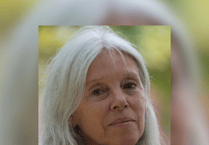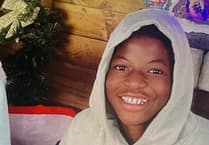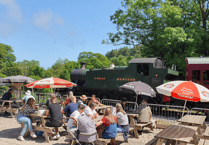Locals are urged to “take care and be aware” of Salcombe Harbour and Kingsbridge Estuary, according to the marine biosecurity plan published by the South Devon AONB Estuaries partnership.
The plan for the biosecurity of the area largely discusses the problem of non native species, which are species that have been transported outside their natural range by human activity. This can include the deliberate movement of a species, for aquaculture for example, but more frequently the accidental transport of species as ‘hitchhikers’ such as those attached to the hulls of vessels.
When a non native species grows rapidly and starts to upset the environment, economy, health and the way we live they are often referred to as invasive non native species. Whether a non native species becomes invasive or not is unpredictable and all pose some threat.
The plan suggests that a good biosecurity routine is essential, even where invasive non-natives are not yet thought to be present. Biosecurity means taking steps to ensure that good practices are in place to minimise the risk of spreading non native species. The plan emphasises that everyone has a vested interest and role to play in the successful biosecurity of Salcombe Harbour and Kingsbridge Estuary.
Some of the most unwanted non native species in Salcombe Harbour and Kingsbridge Estuary have been listed in the plan, and include the Pacific oyster, native to Japan and south east Asia, the slipper limpet, native to North America, and the distinctive olive-brown seaweed, wireweed, originating from Japan.
These non native species can pose problems to the harbour and estuary for a number of differing reasons, ranging from making shores hazardous because of sharp shells, damaging habitats for birds and other species, entangling propellers and even smothering native seabed species.
The plan goes on to explore the different ways in which these non native species could be introduced to Salcombe Harbour or Kingsbridge Estuary, the most high risk way being via marine engineering vessels, via in-water cleaning or slipway cleaning. Fishing vessels and recreational vessels held a medium risk rating in the plan largely due to in-water cleaning, fouled nets and gear and the disposal of by-catch.
The plan sets out methods to help prevent the spread of marine non native species in its proposal of simple biosecurity actions and measures for all who use the Salcombe Harbour and Kingsbridge Estuary. The most important message being to “check - clean - dry”. Non native species cannot survive long-term desiccation.
South Devon AONB have created a animated video interpreting the natural water cycle and other important areas of aquatic science and geography as well as taking a quirky look at the dark side, taking its viewers on a thought provoking journey through the murky depths and issues of waste and water quality.
The local estuary biosecurity plan has been produced by the South Devon area of outstanding beauty estuaries partnership, the local relevant authorities, organisations, owners, users and community of Salcombe Harbour and Kingsbridge Estuary with support from Robin Payne and Sarah Brown from C2W.
More information on non native species can be found here:?http://www.nonnativespecies.org/checkcleandry/





Comments
This article has no comments yet. Be the first to leave a comment.